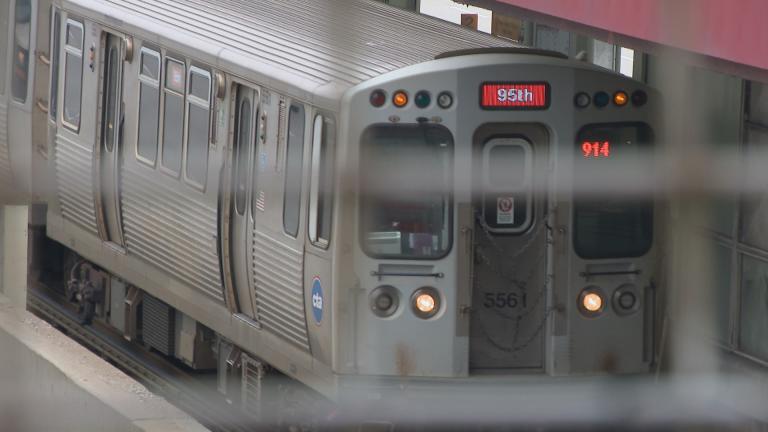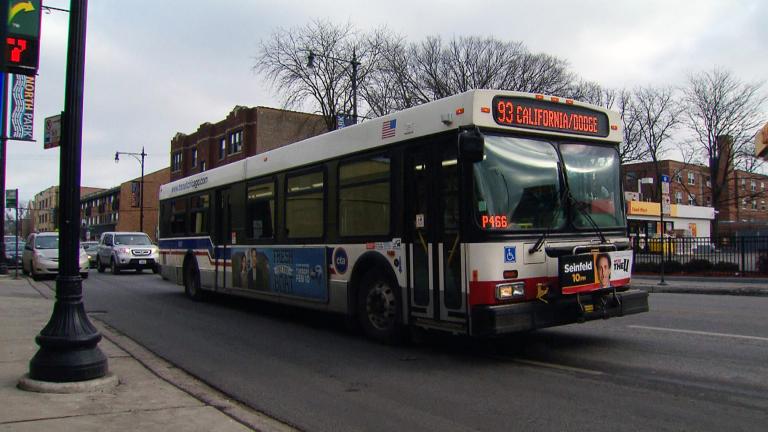Chicago Transit Authority officials marked the one-year anniversary on Tuesday of the “Meeting the Moment” plan aimed at boosting the agency’s diminished service and staffing levels – while also getting an earful from commuters and advocates about what more needs to be done.
The CTA says in July of 2023, it delivered an average of 88% of scheduled rail service, compared to 71% in August of last year. And it says it delivered 96% of bus service this July, compared to 81% last August.
Despite those gains, multiple public commenters at Tuesday’s meeting of the agency’s board of directors called out the CTA for subpar experiences, including long waits and problems with safety and security.
CTA President Dorval Carter acknowledged the frustrations many commuters still have and said the agency is doing its best amid a tough environment for transit systems around the country.
“Providing quality public transit service in a post-pandemic America has been a national issue facing public transit agencies … especially large legacy systems like CTA,” Carter said. “I recognize that not everyone has a positive experience riding CTA on a regular basis … we share the concerns that you have about the quality of our service and are certainly working diligently to improve it.”
Some transit advocates say there’s still more to be done. Part of the strategic plan involved changing bus and train schedules to match staffing levels, which Carter was adamant weren’t cuts.
“They’re running the right number of trains on most of the lines, mostly, every day – it definitely fluctuates from day to day. But they’re running at really inconsistent intervals now,” said Brandon McFadden with the group Commuters Take Action. “You’ll see trains that will run back to back, and then a really long gap in between them that may not necessarily be caught in the metrics the way they’re measuring them.”
The CTA measures delays using a metric called headways – the interval between arrivals. If a train is supposed to arrive every 15 minutes but doesn’t come for 30 minutes, McFadden says the CTA measures that as a double headway, or twice the expected interval. But he says if the train comes in 29 minutes, it wouldn’t get picked up as a double headway, despite the significant delay.
Carter has long said the major reason behind long waits and inconsistent service is that the agency hasn’t had enough bus and train operators.
At Tuesday’s meeting, he touted that the CTA’s held more than 10 jobs fairs in the last year, with nearly 3,000 attendees, and also lauded new hiring and retention incentives.
“We’ve created the most aggressive and comprehensive recruitment and hiring program that this agency has ever had,” Carter said. “As a result, year to date, the CTA has already hired more employees in 2023 than in any previous recent year – including 600 newly hired bus operators, which is as many bus operators as we have historically hired in a 12-month period.”
But McFadden says despite all that recruitment, his group sees CTA staffing numbers that are relatively flat and hopes for more transparency.
“They’re showing (that they’re) losing this many (employees) to transfers or retirements or just plain separations, but we aren’t really seeing why the numbers aren’t growing, whether it’s not enough qualified candidates or we’re not trying hard enough to get qualified candidates,” he said.
The CTA’s chief financial officer also outlined the agency’s current fiscal picture on Tuesday, sounding a positive note while reminding board members of possible future shortfalls.
So far this year, the CTA is reporting $11.6 million more in revenue than expected, and $24.7 million more than it had taken in this time last year. And despite higher than budgeted security costs this year, the agency says it has kept expenses $57.7 million under budget so far.
The CTA also has some $1.13 billion in federal COVID relief funding on hand that’s currently being used to make up lost revenue from passengers. That money is estimated to last through 2025 into early 2026, though that projection could change during the agency’s upcoming budget process.
Changes to the CTA’s funding model were one part of a presentation at Tuesday’s meeting from regional planning agency CMAP about creating stronger and more stable transit across the Chicago area.
CMAP’s been charged by state lawmakers with developing a plan for a transit system that’s financially stable, offers better service, and has an eye toward larger issues like climate change and land use.
Planners have been eyeing a wide range of options, from better infrastructure for buses to increased coordination among CTA, Metra and Pace – possibly even some sort of merged transit system.
CMAP and CTA leaders say all those improvements cost money – as much as an extra $1.5 billion in funding for operations. But CMAP Executive Director Erin Aleman said lawmakers shouldn’t skimp when there’s an opportunity for transformational change, arguing that “we have starved our transit agencies for way too many years.”
Aleman says CMAP is in the “home stretch” of developing the plan, with a final recommendation expected in October.
Addressing members of the public at the meeting, Carter said the support of commuters will be critical to getting lawmakers on board.
“There’s going to come a point in time over the course of the next year when your voices, along with the voices of our other customers and stakeholders, are going to be critical to the conversation down in Springfield as we really try to lock in the level of funding that will allow us to address many of the claims and concerns that you’re raising,” he said.
Contact Nick Blumberg: [email protected] | (773) 509-5434 | @ndblumberg






